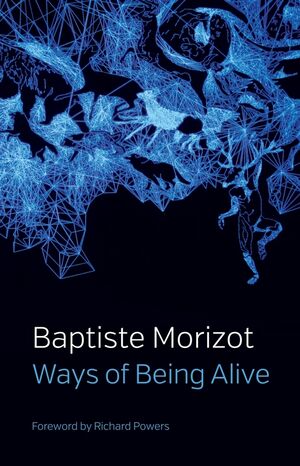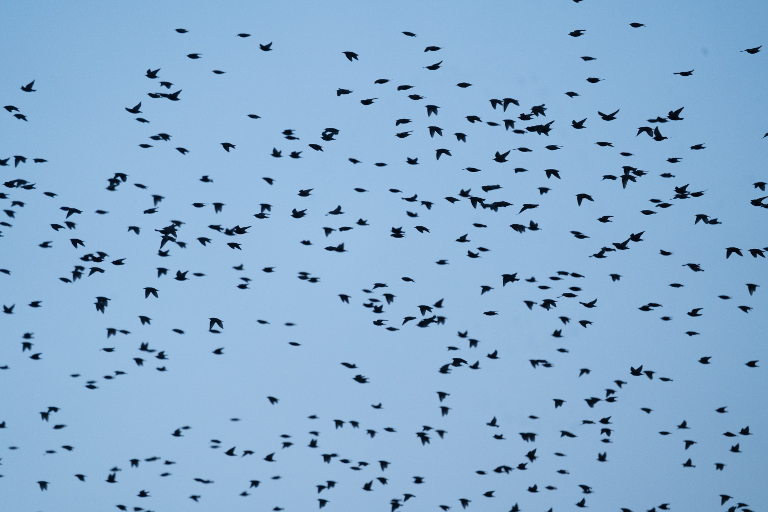 Editorial Note: This is an excerpt from Ways of Being Alive, by Baptiste Morizot, published in English by Polity Books, and reproduced here by permission of the publishers. Originally published in French as Manières d’être vivant ©Actes Sud, France, 2020. The English edition ©Polity Press, 2022
Editorial Note: This is an excerpt from Ways of Being Alive, by Baptiste Morizot, published in English by Polity Books, and reproduced here by permission of the publishers. Originally published in French as Manières d’être vivant ©Actes Sud, France, 2020. The English edition ©Polity Press, 2022
The ecological crisis as a crisis of sensibility
We’re on the Col de la Bataille, it’s the end of summer, it’s cold, the strong northerly winds are crashing into the southerly winds. It’s a desolate pass, still in the Palaeolithic era, crossed by a small asphalt road that’s often closed. But it’s not a desert: it’s a hub of winged life. Indeed, this is where many birds, countless species of them, pass through on their long migratory journey to Africa. It’s a mythical doorway opening up to the other side of the world. We’re here to count the birds. Equipped with a handheld counter, the sort used to count the people entering nightclubs and theatres, we click away frantically in a kind of joyful trance for every swallow that passes; and there are thousands of them, and tens of thousands. My companion counts 3,547 in three hours: barn swallows, house martins, crag martins. They arrive from the north, in clusters, in swarms, and hunker down in the beech forest under the pass, waiting for signs that we cannot interpret. They assess the wind, the weather, how many of them there are, all sorts of other things, and they replenish their tiny reserves of fat during their halt; at one precise moment, for reasons that elude us, an entire swoop of swallows plunges into a breach in time, so they can get across the pass at just the right moment. The sky is dotted with birds. Once they’ve passed the wall of wind that picks them up from the south, they’re on the other side, they’ve made it, they’ve got through one door; there will be others. Lower down, glued to the ground, the creeping migration of sparrows takes place: they flit from tree to tree, imperceptibly, as if they were walking, but as they go from tree to tree they’re going to the end of the world. Some blue tits need to pass under the wave of wind; they cross the road over the pass on foot, it takes them a minute of stubborn effort to travel the asphalt, without doubting their ability but without hurrying either, on a journey that will take them to North Africa. How can a whole continent of courage be contained in eleven grams of life? The birds of prey are there too, the osprey, the secret king of the rivers, who has inventively transformed his talons into powerful paws like those of a fishing bear, and is now transformed into the pure embodiment of action: a pair of wings plunging down from the sky, grafted onto a pair of inexhaustible hands. Kestrels and hobbies pass through the swarm, predators in the company of prey, just as lions travel with gazelles. This is just one threshold in the long procession from one end of the terrestrial globe to the other: the migration of all that’s left of the dinosaurs, still full of life even though some people naively think they’re extinct when they’ve simply transformed into sparrows. The procession includes pipits, wagtails, hedge sparrows, giant vultures and microscopic canaries, wrens, various finches, wallcreepers and royal kites, like Gallic tribes flaunting their colours, each with its customs, its language, its pride without ego and without mirror – each with its own demands. And each of these life forms has its own unique perspective on this shared world, and has mastered the art of reading signs that nobody else can understand.
Swallows, for example, must feed throughout their flight; they have an expert grasp of the climates and the times of day when swarms of insects will cross their path, so they can feed on the wing, without changing course, without stopping, without slowing down.
Suddenly, the noise of an engine distracts our attention. Below, on the road, a single file of vintage cars is climbing up the pass. It’s one of those meetings for car collectors who come out on Sundays to show off their pimped up old jalopies on the mountain roads. They stop at the pass. They get out of their cars for a minute or two to take some acrobatic selfies, trying to cram bonnet, smile and landscape into their screen. They’re endearing, and happy to be here. And then they leave. My companion, standing next to me, comes up with an image that paralyses us in the terrible wind: ‘They didn’t notice’, she says. ‘They didn’t notice that they were standing in the middle of something like the liveliest, most cosmopolitan, most colourful port in the Mediterranean, where countless peoples are bound for Africa’.1 Peoples battling against the elements, weaving in and out of the streams of energy, exulting in the sunlight, coasting along on the force of the wind.
And indeed, we humans are social primates obsessed with our fellows (something we’re very good at), so all that those vintage car enthusiasts saw was a desolate pass, an empty setting, a silent landscape, a bit of wallpaper for their computer screens. But I feel no recrimination towards them as I realize this. They’re neither better nor worse than ourselves. How many times have we seen nothing of the lively interweavings happening in a certain place? Probably every day. It’s our cultural heritage, our socialization that has made us this way; there are causes behind it. But that’s no reason not to fight against it. I do not reproach this blindness, but I feel a certain sadness over it, its extent and its innocent violence. It’s a major challenge for us as a society to learn again how to see the world as populated by entities that are far more marvellous than car collections and museum galleries. And to recognize that they require a transformation in our ways of living and cohabiting.
A crisis of sensibility
From this experience, we can draw an idea. The ecological crisis we are going through is indeed a crisis for human societies: it endangers future generations, the very bases of our subsistence, and the quality of our existence in polluted environments. It’s also a crisis for living beings, in the form of the sixth extinction of species, the destruction of wildlife, and the weakening of ecological dynamics as well as of the evolutionary potential of the biosphere, due to climate change. But it is also a crisis for something else, more discreet, and perhaps more fundamental. This blind spot – for such is my hypothesis – is that the current ecological crisis, more than a crisis in human societies on the one hand, or in living beings on the other, is a crisis in our relations with living beings.
First and foremost, it’s a spectacular crisis in our productive relations with living environments, visible in the extractivist and financialized frenzy of the dominant political economy. But it’s also a crisis in our collective and existential relations, in our connections and affiliations with living beings, forcing on us the question of their importance, the way they are of our world, or outside of our perceptual, affective, and political world.
This crisis is difficult to name and understand. However, each of us has a precise sense of what underlies it: we must alter our relationships with living beings.
The contemporary enthusiasm aroused by political experiments with new ways of inhabiting and entering into relationships with living beings, the rise of alternative forms of collective life, the taste for agroecologies and subversive sciences which re-describe living nature in another way, rich in communications and meanings – these are all indistinct and yet powerful signals of this turning point in the present conjuncture.
One aspect of this crisis is noticed less often, however, due to the discreet and subdued hum of its political dimension, of its possibilities of politicization. This involves thinking of it as a crisis of sensibility.
The crisis in our relationships with living beings is a crisis of sensibility because the relationships we have grown accustomed to maintaining with living beings are relationships with ‘nature’. As the Brazilian anthropologist Eduardo Viveiros de Castro explains, we are the heirs of Western modernity, and so we think that we maintain relationships of a ‘natural’ type with the whole world of non- human living beings, because any other relationship with them is impossible. There are two types of potential relations in the modern cosmos: either natural, or socio-political, and the socio-political relations are reserved exclusively for humans. Consequently, this implies that we consider living beings primarily as a backdrop, as a reserve of resources available for production, as a place of healing, or as a prop for emotional and symbolic projection. To be merely a backdrop and a prop for projection is to have lost one’s own ontological consistency. Something loses its ontological consistency when we lose the faculty of paying attention to it as a full being, as something which counts in collective life. When the living world falls outside the field of collective and political attention, outside the field of what is deemed important, then a crisis of sensibility is triggered.
By ‘crisis of sensibility’ I mean an impoverishment of what we can feel, perceive, and understand of living beings, and the relations we can weave with them – a reduction in the range of affects, percepts, concepts and practices connecting us to them. We have a multitude of words, types of relationships and types of affects to describe relationships between humans, between collectives and between institutions, with technical objects or with works of art, but far fewer words for our relations to living beings. This impoverishment of the scope of our sensibility towards living beings, of the forms of attention and of the qualities of openness towards them, is both an effect and one of the causes of the ecological crisis we face.
Teaser Photo by Jonny Gios on Unsplash





